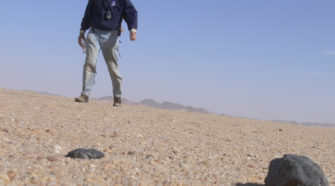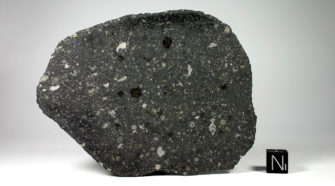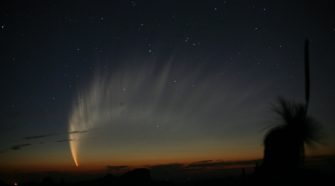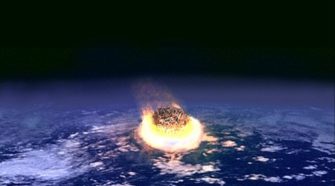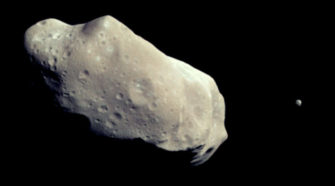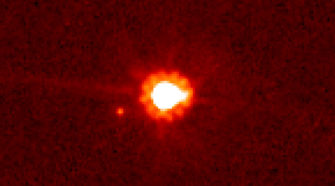Topic
Special Topic: 2008 TC3 and the Almahata Sitta Meteorite
The “Special Topics” presentation three weeks ago discussed actions that we might take should we detect an asteroid that appears will impact Earth. The first and foremost task is the collection of as much data as possible in order to refine the orbit and the likelihood of an actual impact, and if this continues to …
Special Topic: Carbonaceous Chondrites
In an earlier “Special Topics” presentation I described how meteorites are classified based upon their respective compositions. As I indicated in that presentation, the majority of known meteorites are the “stony” meteorites composed primarily of various silicates, and of these, most contain small, roughly spherical particles called “chondrules” that are primarily made up of silicates …
Special Topic: Comet Tails
Of all the phenomena associated with comets, the one that more than any other gives them their beauty and their mystique is their tails. As recounted in a previous “Special Topics” presentation, the first recorded scientific observation of a comet concerned its tail: when observing the bright comet that appeared during the second half of …
Special Topic: Deflection Strategies
A common and persistent theme throughout “Ice and Stone 2020,” and indeed one of the primary reasons the “small bodies” of the solar system are of such high interest in the first place, is the threat they pose to Earth – or, at least, to our civilization and way of life here on Earth – …
Special Topic: “Small Bodies” Moons
The “Special Topics” presentation four weeks ago was on the subject of the small moons of the various planets in the solar system. It would seem reasonable to think that the bodies that possess moons don’t stop with the major planets, but that many of the “small bodies” that are the focus of “Ice and …
Special Topic: The Kuiper Belt
Where the various comets that we see in our skies come from has long been a subject of high scientific interest. The Week 3 “Special Topics” presentation discussed how in the mid-20th Century the Dutch astronomer Jan Oort proposed the existence of the structure that we now call the “Oort Cloud” as being the source …

